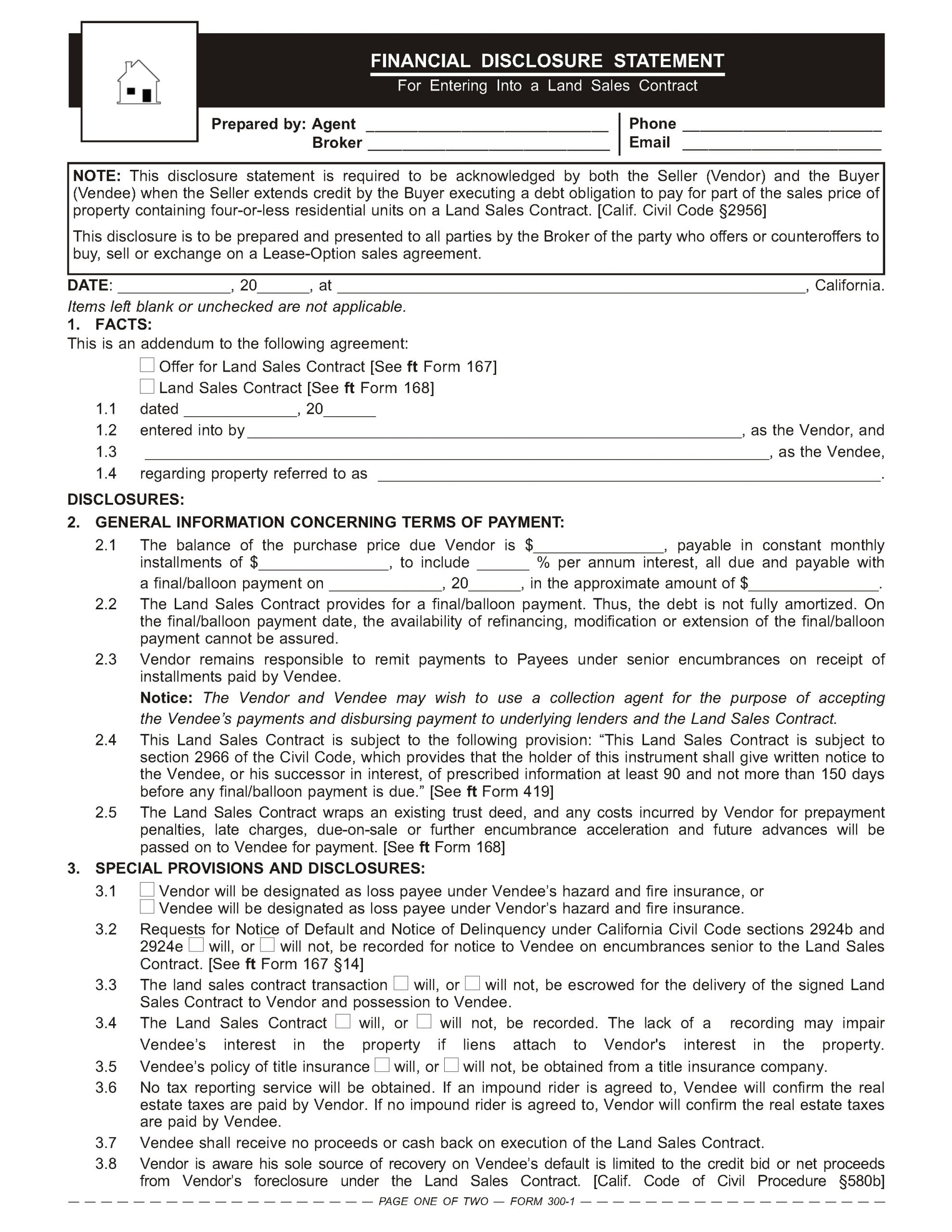Carryback financing
Seller financing, also known as carryback financing, occurs when a seller carries back a note and trust deed executed by the buyer to evidence a debt owed for purchase of the seller’s property. [See RPI e-book Creating Carryback Financing]
A seller who offers a convenient and flexible financing package to prospective buyers makes their property aggressively more marketable and defers the tax bite on their profits.
For buyers, seller carryback financing offers:
- a moderate down payment;
- competitive interest rates;
- less stringent terms for qualification than those imposed by lenders; and
- no origination costs.
Seller financing is documented in a variety of ways, including:
- land sales contracts;
- lease-option sales;
- sale-leasebacks; and
- trust deed notes.
A carryback seller assumes the role of a lender at the close of the sales escrow. This includes all the risks and obligations of a lender holding a secured position in real estate.
The secured property described in the trust deed serves as collateral for the debt. The property itself is the seller’s sole source of recovery to mitigate the risk of loss on a default by the buyer.
Disclosure on seller carrybacks
A seller who partially finances the sale of their one-to-four unit residential property by carrying back a note and trust deed obtains an agent to locate a prospective buyer. The seller’s agent prepares an offer on a purchase agreement form. [See RPI Form 150]
The seller’s agent also prepares a Financial Disclosure Statement addressing the carryback mortgage, also known as a carryback disclosure statement, and attaches it as an addendum to the purchase agreement. [See RPI Form 300, 300-1 and 300-2]
The addendum contains numerous statements about the financial, legal and risk-of-loss aspects of the carryback mortgage for the buyer to consider and review with their agent.
When the statement is not included as an addendum to the purchase agreement, a statutory further-approval contingency allows for later cancellation of the transaction. [See RPI e-book Real Estate Practice Chapter 36]
The information entered in the carryback disclosure statement is based on the terms of the:
- purchase offer;
- title conditions;
- activities to be undertaken by the buyer and seller in escrow; and
- information obtained from the buyer.
The carryback disclosure statement contains only the legislatively mandated minimum disclosures. [Calif. Civil Code §2956]
All brokers in transactions for the purchase of one-to-four unit residential property involving seller carryback financing are mandated by statute to:
- prepare a carryback disclosure statement; and
- present it to both the buyer and seller for their review and signatures. [CC §2956]
An agent uses the Financial Disclosure Statement for Entering into a Seller Carryback Note published by RPI (Realty Publications, Inc.) when preparing an offer or counteroffer to buy, sell, exchange or option a one-to-four unit residential property with seller carryback financing on a grant deed conveyance. It allows the agent to prepare an addendum to disclose the terms and conditions of the carryback note and trust deed. [See RPI Form 300]
Land sales contracts
A land sales contract
A land sales contract is also commonly called a:
- land-contract;
- conditional sales contract;
- installment sales contract;
- real property sales contract; and
- contract for deed.
Related Video: Word-of-the-Week: Land Sales Contract
Click here for more information on this topic.
At its core, a land sales contract is a security device which is different in purpose from a trust deed lien on property. The contract is evidence of the buyer’s debt owed to the seller for the unpaid amount of the purchase price. It states the conditions allowing the seller to retain title to the property.
Under a land sales contract, a buyer and seller enter into a contract for the sale of property. The buyer takes possession of the property and makes payments according to the terms of the contract. The transaction typically lacks a formal escrow, title insurance and full disclosures of property conditions.
When the buyer defaults on a land sales contract, the seller forecloses by holding a sale of the property, even though the property remained vested in the seller’s name. Foreclosure is mandated since the seller needs to terminate the buyer’s right of redemption as the only method for eliminating the buyer’s right to pay off the land sales contract and obtain clear title – unless they enter into a deed-in-lieu of foreclosure. [See RPI e-book Creating Carryback Financing Chapter 22]
An agent uses the Financial Disclosure Statement for Entering into a Land Sales Contract form published by RPI to provide acknowledgement by both the seller and the buyer of the disclosures when the seller extends credit by the buyer executing a debt obligation to pay for part of the sales price of property containing one-to-four residential units on a land sales contract. [See RPI Form 300-1]
Lease-option sales
A lease-option sale is a sales transaction characterized by a purchase agreement containing a provision for the transfer of possession on a lease and buildup of equity in ownership by the tenant over the term of the lease before closing the sale by crediting the purchase price with a portion of the buyer’s lease payments.
For example, consider a buyer and seller who sign a standard purchase agreement. [See RPI Form 150]
Escrow is opened, and a grant deed, a carryback note, a trust deed and the down payment are deposited into escrow. However, the closing and disbursement of funds are delayed until after one to three years of timely performance by the buyer.
During the extended escrow period, payments are made by the buyer to the seller which include credit of a portion of the payment toward the down payment called for in the purchase agreement.
Since the buyer wants to take possession of the property prior to the close of escrow, they enter into an interim occupancy (lease) agreement with the seller.
Buyers and sellers of real estate need to understand that a sale structured as a lease-option is still a sale under California law. The form used to structure the sale does not change a buyer’s or seller’s rights and obligations under mortgage and contract law. [See RPI Form 300-2]
The lease-option sale usually is not documented through an escrow, nor is there delivery of a grant deed or a note and trust deed.
Instead, the buyer will lease the property and hold an option to purchase the property at a predetermined price, not a price based on market value at the time of exercising the option. Thus, any increase in value accrues to the buyer, not the seller. [See RPI e-book Creating Carryback Financing Chapter 24]
Except for the absence of documentation in the form of a grant deed, note and trust deed, the terms of the lease-option sale have all the economic characteristics of a credit sale. Under a lease-option sale, there is:
- an agreed-to price;
- a down payment;
- monthly rent payments which apply in whole or in part toward principal (the balance being interest); and
- a final/balloon payment for the balance of the unpaid purchase price.
A lease-option agreement structured on terms economically consistent with a credit sale is neither a lease between a tenant and a landlord nor an option to buy. The lease-option sales agreement is a disguised security device for credit financing on a sale arranged by a buyer and a carryback seller. [Oesterreich v. Commissioner of Internal Revenue (9th Cir. 1955) 266 F2d 798]
An agent uses the Financial Disclosure Statement for Entering into a Lease-Option Sale form published by RPI when preparing an offer or counteroffer to buy, sell, exchange or option a one-to-four unit residential property with the seller extending credit on a lease-option sales agreement. It allows the agent to prepare an addendum for disclosing the terms and conditions of the lease-option agreement. [See RPI Form 300-2]
Want to learn more about carryback financing? Click an image below to download the RPI books cited in this article.



















